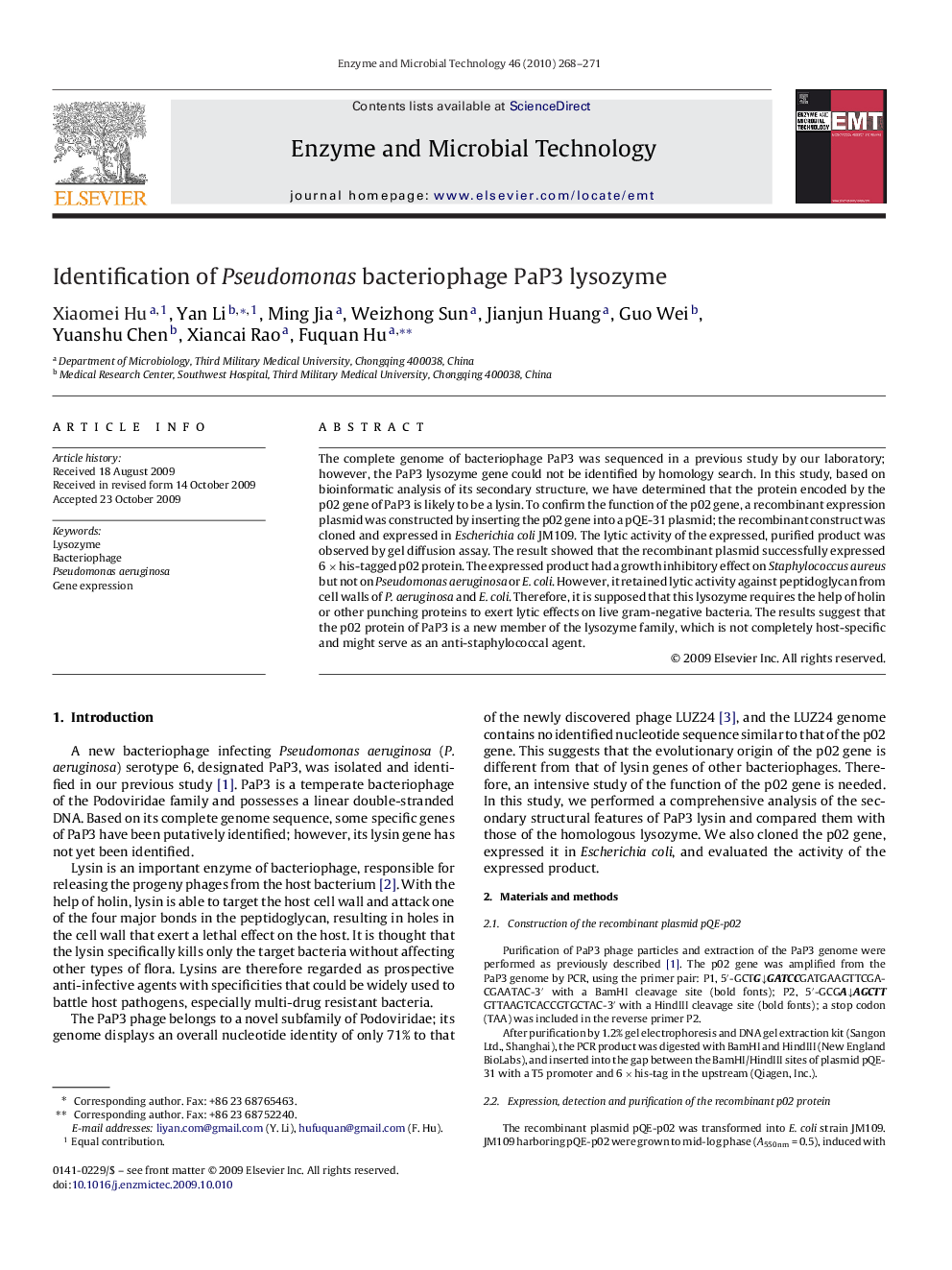| Article ID | Journal | Published Year | Pages | File Type |
|---|---|---|---|---|
| 17640 | Enzyme and Microbial Technology | 2010 | 4 Pages |
The complete genome of bacteriophage PaP3 was sequenced in a previous study by our laboratory; however, the PaP3 lysozyme gene could not be identified by homology search. In this study, based on bioinformatic analysis of its secondary structure, we have determined that the protein encoded by the p02 gene of PaP3 is likely to be a lysin. To confirm the function of the p02 gene, a recombinant expression plasmid was constructed by inserting the p02 gene into a pQE-31 plasmid; the recombinant construct was cloned and expressed in Escherichia coli JM109. The lytic activity of the expressed, purified product was observed by gel diffusion assay. The result showed that the recombinant plasmid successfully expressed 6 × his-tagged p02 protein. The expressed product had a growth inhibitory effect on Staphylococcus aureus but not on Pseudomonas aeruginosa or E. coli. However, it retained lytic activity against peptidoglycan from cell walls of P. aeruginosa and E. coli. Therefore, it is supposed that this lysozyme requires the help of holin or other punching proteins to exert lytic effects on live gram-negative bacteria. The results suggest that the p02 protein of PaP3 is a new member of the lysozyme family, which is not completely host-specific and might serve as an anti-staphylococcal agent.
